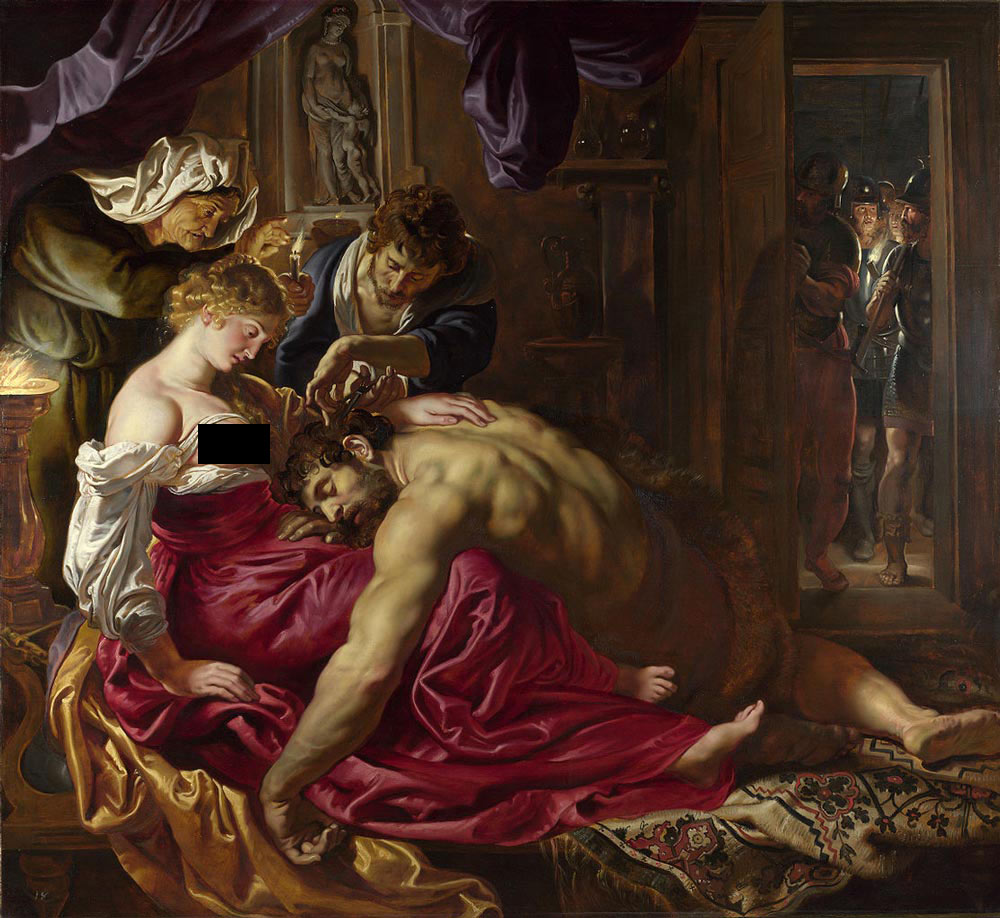| Samson and Delilah | |
|---|---|
 |
|
| Artist | Peter Paul Rubens |
| Year | 1609-1610 |
| Medium | Oil on wood |
| Location | National Gallery (London) |
| Dimensions | 73 in × 81 in |
| 185 cm × 205 cm | |
| Famous Paintings by Peter P. Rubens | |
| Samson and Delilah | |
| The Descent from the Cross | |
| Prometheus Bound | |
| The Raising of the Cross | |
| Adoration of the Magi | |
| Consequences of War | |
| Complete Works |
Samson and Delilah is an oil painting attributed to Peter Paul Rubens, a prolific Flemish Baroque painter well-known for a variety of 17th Century masterpieces. The painting depicts a scene from the Samson and Delilah story from the Old Testament.
Previously, Samson and Delilah was a painting attributed to Gerard van Honthorst, a Dutch painter with a similar style. Like Honthorst, Rubens worked in the city of Rome during the 17th century, in Caravaggio’s shadow.
About the Painting
The painting depicts a candlelit room, with a sleeping Samson in the lap of Delilah, and a group of Philistines in a doorway off to the right. According to the Old Testament, Samson’s strength was from his hair, cut by a Philistine to try and diminish the strength of the here. The oil painting is full of symbolic icons and gestures: the statue of Venus and Cupid, the crossed hands of the Philistine that signals deceit and the old woman believed to be a procuress.
Completed during 1609-1610, Samson and Delilah was commissioned by an alderman of Antwerp. Nicolaas Rockox, the alderman, wanted the piece for display in his townhouse. The painting is clearly influenced by Caravaggio as well as Michelangelo and the antique.
The pale skin of Delilah draws the eye immediately to her upper body, as her skin appears luminous against the darkened surroundings. Delilah’s hand is the center-point of the painting, resting upon Samson’s naked back.
Rubens is a master at creating liquid shadow. Initial drawings would have been made using small pointed brushes to highlight the muscle tone, for example, Samson’s upper torso, before the shadows/flat areas were filled in. Rubens also used another technique in this painting: scratching into the wet oil paint. Example: perfume pots near the door.
About the Artist
Rubens created a number of history paintings, altarpieces, landscapes and portraits as well as allegorical and mythological pieces. Rubens had a large studio in Antwerp that produced paintings that were popular throughout Europe. A painter, art collector and diplomat knighted by Charles I and Philip IV, Rubens had a successful life.